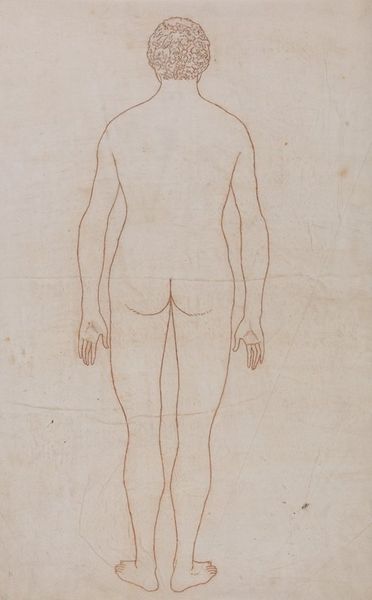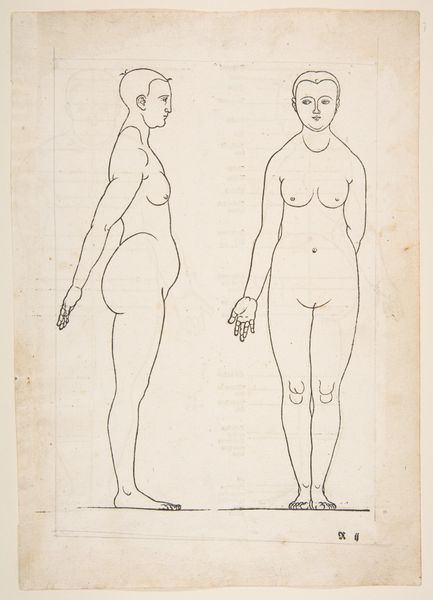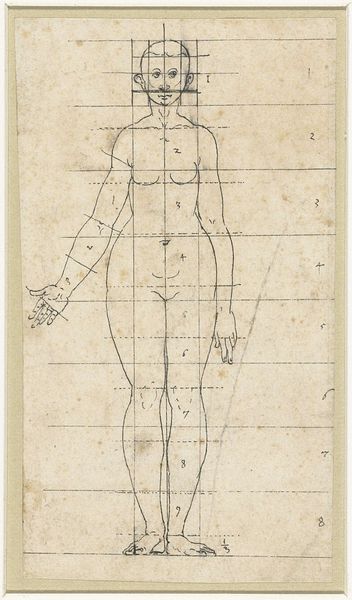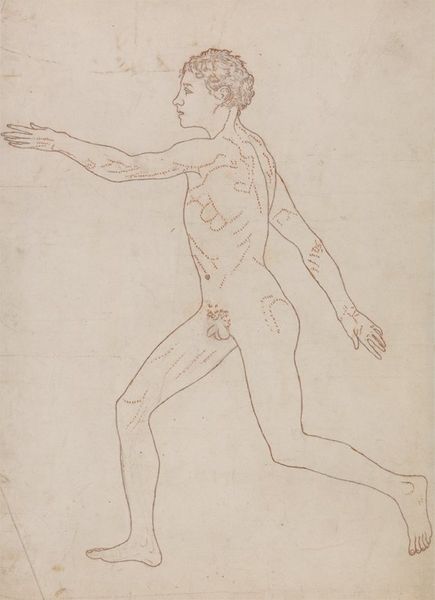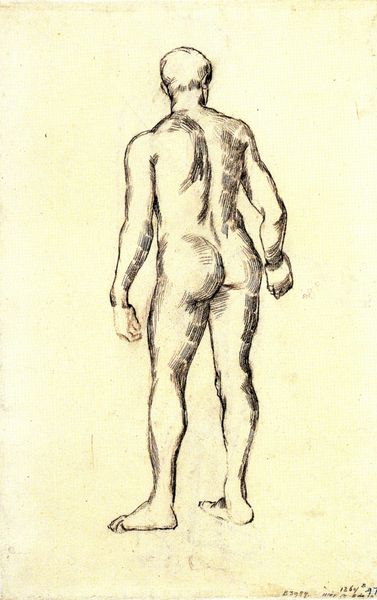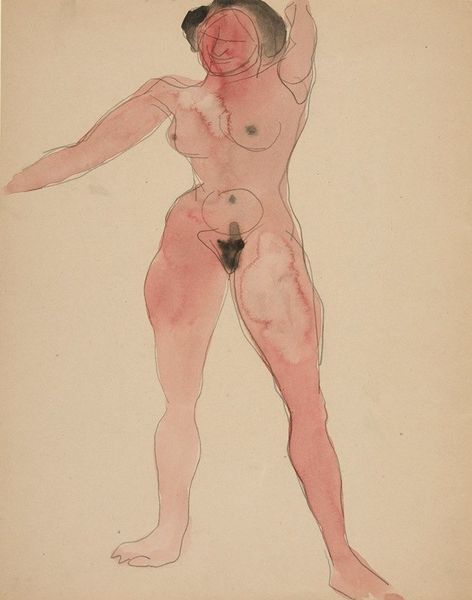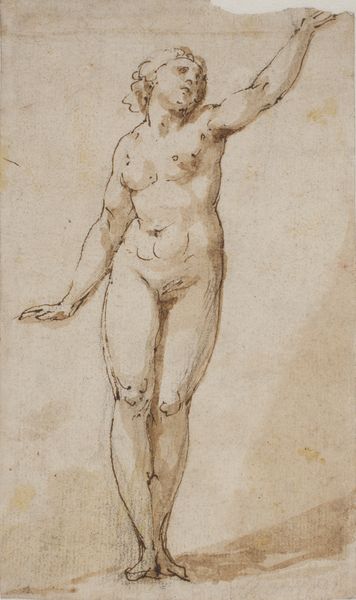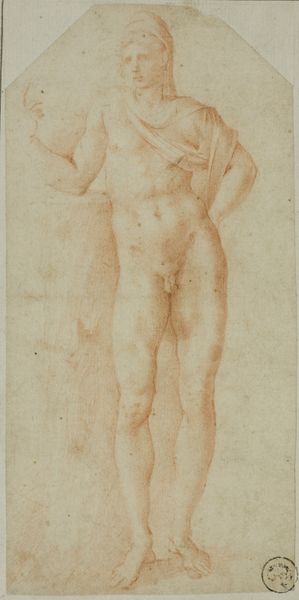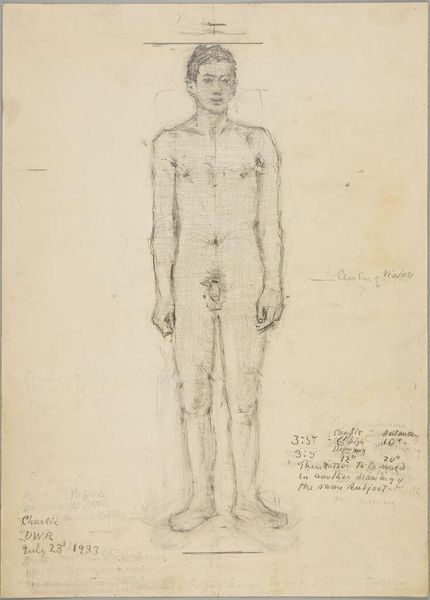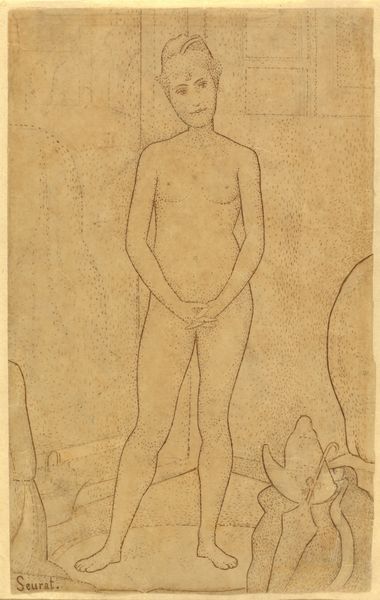
drawing
#
portrait
#
drawing
#
classical-realism
#
figuration
#
form
#
line
#
academic-art
#
nude
Copyright: Public Domain: Artvee
Editor: Here we have George Stubbs's "Study of the Human Figure, Anterior View," dating roughly from 1795 to 1806. It’s a drawing, fairly large, and the nude figure is presented head-on. The first thing that strikes me is its almost scientific detachment, a clinical assessment of the human form, don't you think? What do you make of it? Curator: Precisely. The formal qualities dominate our reading of the piece. Notice how the lines are precise, almost schematic. The drawing emphasizes the anatomical structure. The stippling indicating muscle tone and underlying structure acts not as shading, but as cartography. It invites a structural analysis, breaking down the figure into constituent parts. Do you see how the symmetry emphasizes the figure's inherent geometry? Editor: I do. The evenness makes it feel almost… engineered. But does this calculated approach risk stripping away any sense of humanity or emotion from the subject? Curator: Emotion is not the object here, but an articulation of form. Focus on how Stubbs employs line to delineate boundaries, how the use of space creates a sense of depth despite the flat background. He uses a minimal tonal range to define form, thereby flattening out psychological elements. Is there emotion within form itself? Editor: So, it's the purity of form that is paramount, even over expressiveness? The figure exists as a study of the human body, not of a human being. Curator: Correct. The aesthetic impact emerges directly from its structural clarity and internal relations of forms. Note the way the internal markings give rhythm to the surface contour. We move our focus between interior and exterior space on the page. What might initially seem to be two distinct elements in fact are interconnected and co-dependent aspects of one whole, like binary oppositions within a closed system. Editor: That's an interesting point! I initially overlooked the relationship between the interior and exterior lines. It sounds like the beauty is in its very unemotional, deconstructed state. I learned a lot about seeing structure. Curator: Indeed, the very act of observing its structure *is* the aesthetic experience here. This allows for a deeper understanding of classical art, its structuralism and philosophy, which offers a way to appreciate even those pieces that might at first seem devoid of emotion.
Comments
No comments
Be the first to comment and join the conversation on the ultimate creative platform.
